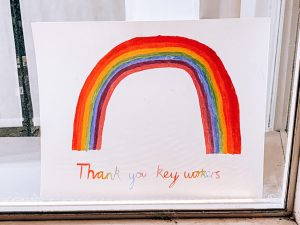Life as an HR consultant over the last 4 months of the pandemic has been an ‘interesting time’!
In early March before the lockdown began business owners were understandably worried. We could all see what was going on in China and other parts of Europe on the news and knew it was inevitably going to affect us here in the UK.

First, we started looking at options. What would we do in a lockdown situation? What if we can’t work and I won’t be able to afford to pay my staff?
Lay-off Clause
All of my clients have contracts which include a lay-off clause – so this was our starting point. Ideally, nobody wants to do this. It’s in the contract but it really is a route nobody wants to use for any length of time.
Put simply, it allows employers to send staff home when there is no work. The only pay they will receive is a statutory guaranteed payment which is £30 per day for a maximum of five days in a three month period. That’s a total of £150.00 in three months!

We were all in the dark as to how long the Coronavirus pandemic would continue and that dreaded word kept cropping up ‘unprecedented’! No employer wanted to tell their staff –“go home, you will get £150.00 and hopefully, you can come back soon”, with the alternative being to pay the staff without any revenue there wasn’t really a choice. It was quite frightening.
I started preparing letters but advised clients to hold fire with sending them out. There were whisperings that the government was going to help in some way.
20th March 2020 the government announces the Coronavirus Job Retention Scheme.
The 20th March 2020 the government announced the Coronavirus Job Retention scheme. Typically announcing it on a Friday at 5pm! Monday morning my phone started ringing at 7am. Everyone needed to know what they had to do.
Working alongside lots of other HR consultants and got involved in various HR consultants’ forums to consider what was going on. Everyone was having to figure things out as we were drip-fed the legislation.
But what a relief!
Everyone breathed a huge sigh of relief; Businesses saved overnight. Employers could sleep at night knowing their employees were going to continue to receive some pay when the business was shut down.
I know of business owners literally crying they were so happy; people already been made redundant were called and offered their jobs back.
Furlough
That seems like a long time ago now and furlough has become a word used more than any other in HR circles. How we furlough, who we furlough, what can happen during furlough?
Legislation has continued to evolve and overall, I think it has been a great scheme. There have been some downsides, but people receiving 80% pay whilst not being able to go anywhere and spend their money have mostly been quite happy. People who earn over £30k per year have been harder hit as the cap was at £2,500 per month. On the whole it had the desired effect. People stayed at home.
23rd March 2020 – “Stay At Home”
After the announcement on the 23rd March advising everyone to stay at home – about 80% of the employers I work with furloughed their staff. Constructions sites could continue to work, but within a week they could not get access to resources. Inevitably, staff continued to be furloughed into April when everything had come to a standstill.

Since then, I have been advising clients on the changes to the furlough scheme and planning ways of bringing employees back to the workplace or helping them manage staff who are home-working. I also became an NHS volunteer and have been helping people in need – delivering food, collecting prescriptions, and ringing up people who are lonely and need a chat.
Changes to Business
In May the redundancies started.
Many businesses affected by the pandemic have had to make big changes and the lockdown period has given employers time to consider the most economic way of running effectively.
Unfortunately, this often means job losses. Again, the HR forums are busy, this time managing redundancies is now commonplace and every HR consultant I know, is dealing with various redundancy situations.
Working with employers to try and avoid redundancies has been the majority of my workload through June, with the job retention scheme making it cost effective to put staff on notice during their furlough, businesses realize it is better to make these decisions now instead of later.
Flexible furlough scheme

The flexible furlough scheme came into effect on the 1st July 2020 and this really is a good scheme. I personally think it would have been better if it had been introduced earlier. However, I appreciate the government had to make some quick decisions back in March.
This new improved scheme allows staff to work for the business on a part-time basis or shorter hours. Employers can choose: a week on/ week off or shorter days or a couple of hours a week. Any arrangement that works for the business. It helps with the gradual return back to work.
The Job retention Scheme Grant pays 80% of the wages for the time the employees are not working. I have been kept me busy making sure the correct agreements with employees are in place. And ensuring employers understand what they can and can’t do.
The new ‘Normal’
It feels as though we are through the worst of the pandemic. Many businesses are back at work with the majority of their staff working.
The way we all work has changed – with alternating shift patterns, one way systems, lots of home working, so many video calls and hand santizer literally everywhere. There are high cases of people suffering from various mental health issues which is a big issue for workplaces and a worrying outcome of the pandemic and lockdown.
We are all trying to keep a distance from each other and panic ensues every time we hear someone cough. But there seems to be some hope… people are getting on with life and employees mostly are happy to get back to some kind of normality.
We are midway through July and I wonder what the future holds. One thing is for sure if ever there was a time for businesses to need HR support it is 2020.
If you are in need of HR support please get in touch- we give fifteen minutes of free advice to anyone who calls and are happy to answer your questions.





